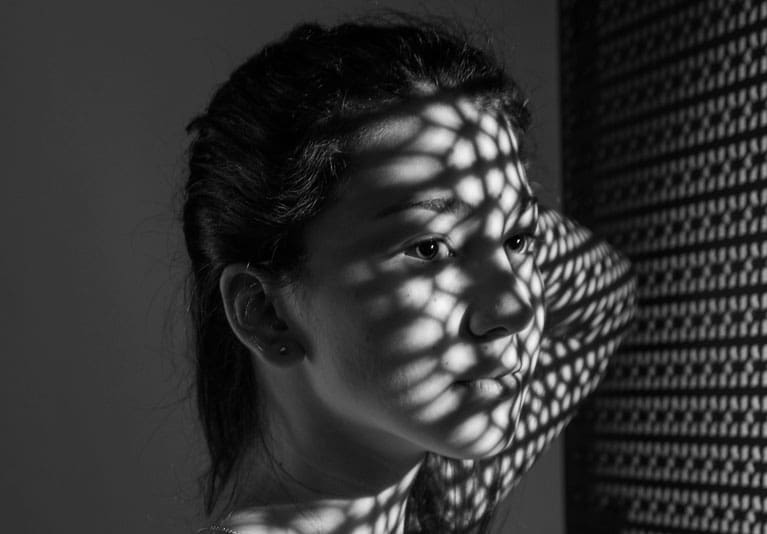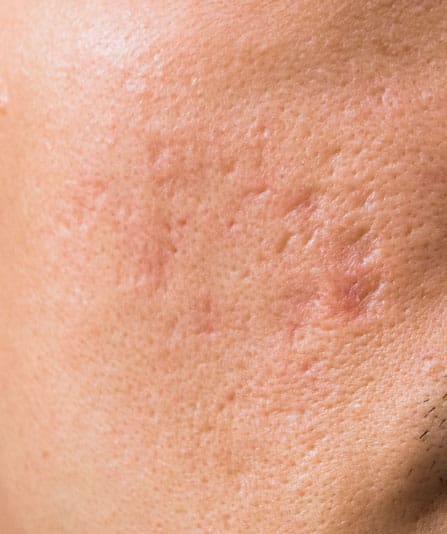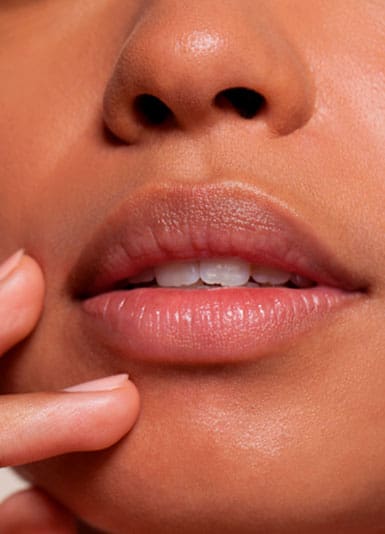Scars by Mr Ioannis Goutos
Atrophic Scars

Atrophic scars represent a small subsection of scars that can form after an injury or insult to the skin. They are most commonly associated with acne scarring, but can be precipitated by other types of skin injury as well. Typically atrophic scars appear depressed from the level of the surrounding skin.
The healing process following damage to the skin is complex and involves several stages. In the ‘proliferative’ phase, the cells in the skin produce connective tissue to fill the damaged area which is what produces the final ‘scar’. The main substance produced in this stage is a protein called collagen. In atrophic scar formation, there is insufficient production of collagen, meaning that there is not enough of the replacement tissue to bring the scar level with the skin. There are a number of different subtypes of atrophic scars:
- Ice pick scars – these are very narrow and usually ‘v-shaped’ extending deep within the skin surface
- Boxcar scars – these are usually wider in appearance and have more of a ‘U’ shape. They can be shallow or deep within the skin.
- Rolling scars – these are typically gentler and wider depressions in the skin with a rounded edge.
Mr Ioannis Goutos is an expert plastic surgeon with extensive experience in all areas of scar treatment; he places particular emphasis on the psychological factors affecting patients in their everyday lives. He uses this to create individualized treatment plans for each patient to achieve optimal results.
Book your consultation today
Book nowAbout this condition
Whilst atrophic scars are most typically associated with acne scarring, the following can also result in formation of a depressed scar:
- Skin cysts
- Chicken pox
- Lacerations (cuts) or incisions in the skin, from either injury or surgery (particularly following surgical removal of moles or other skin lesions)
- Burns
Risk factors associated with developing atrophic scars includes having a family history or previous occurrence of atrophic scarring. People who suffer with connective tissues disorders such as Ehlers-Danlos syndrome are also higher risk for developing atrophic scars.
If you are worried about developing atrophic scarring or know that you have a tendency to form atrophic scars, there are a number of measures that can be taken to help reduce your risks. If you are known to suffer from acne, then early treatment from a specialist can reduce the risk of scarring. Ensuring that any skin cysts or chicken pox are kept clean and well maintained can help prevent scarring from infections. It is also important to seek appropriate wound care advice following an injury or burn to ensure good primary healing of the wound.
Atrophic scarring can have a significant impact on self-esteem for some people and can affect social and professional interactions.
Although difficult to manage, there are a number of treatment options that can be used to improve the appearance of atrophic scars including:
- Injection of fat or soft tissue fillers underneath the area of scarring
- Chemical peels to promote skin regeneration
- Needling techniques which help to promote the production of collagen in treated areas
- Laser treatment (in particular vascular and resurfacing lasers), which improve colour and texture of the skin
- Surgical methods – including removal and closure (excision) or freeing up areas of scarring using a needle (subcision).
The most appropriate procedures are discussed on a case-by-case basis and will depend on the characteristics of the scarring and your own scar treatment goals. In some cases, repeated treatments or a combination of techniques may be used for the best outcomes.

Testimonials
Mr Goutos is delighted to share some of his patient and peer feedback on their experiences of his services.











